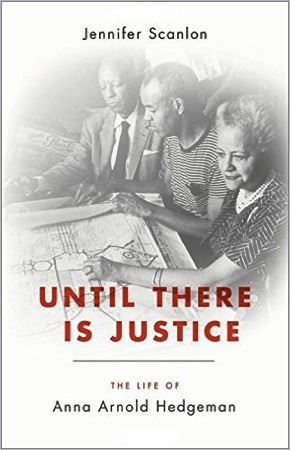One Reason Why Blacks Rallied to Harry Truman in 1948
For the next several months, pundits, prognosticators, and everyday people will engage in lively debate: what, or even better who, will determine the outcome of this year’s presidential race? Will disaffected working-class white males swing the results in one direction, or might women, in spite of the inopportune comments of Gloria Steinem and Madeleine Albright, swing it in another? Can a Republican win the race without the support of significant percentages of voters of color? Will young people’s passion for a more progressive Democratic politics continue to surge, or will it dissipate as the political season drags on?
Along with the rest of the American public, historians will be looking ahead, wondering about voter turnout, regional outcomes, percentages, and voting blocs. But we will also look back, thinking, reading, and writing about the elements of past elections that, even if they do not directly provide insight into the present or clues about the future, enliven our engagement with and appreciation for the power of the ballot box.
We would do well to look back to Anna Arnold Hedgeman and the 1948 presidential election.
In April of 1945, following the death of President Franklin D. Roosevelt, Vice President Harry S. Truman ascended to the office. Three years later, with World War II behind him, Truman faced a presidential contest for the first time. He was not projected to win. Members of the press expected that Thomas Dewey, the popular, moderate Republican governor of New York, would beat Truman, handily. The president faced resistance from the left as well as from the right, with party stalwarts fearing that Progressive Party candidate Henry Wallace would split the Democratic vote. In perhaps the most famous of the related stories, the Chicago Tribune had so little faith in the sitting president that they sold several hundred copies of the post-election edition of the paper with the headline reading “Dewey Defeats Truman” before issuing a corrected version.
Yet in the lead up to that November 1948 election, in spite of the smugness of the Dewey camp, questions abounded, including uncertainty about which groups of voters would determine the outcome: would workers, farmers or African Americans swing the election to or away from Truman?
Black Americans as a constituency had not yet exercised national influence over a presidential election, but 1948, some thought, could be the year. The majority of black voters had pulled the lever for Franklin Roosevelt, but that did not make them “capital D” Democrats. Prior to the Great Depression and Roosevelt’s ascendancy, the majority of black voters had remained true to the Party of Lincoln, in part to repudiate the Southern, openly racist faction of the Democratic Party. One of Truman’s key advisors, Clark Clifford, feared the worst. “Unless there are new and real efforts,” he warned, “the Negro bloc… will go Republican.”
Enter Anna Arnold Hedgeman.
Hedgeman, an African American activist and policy maker, had made the Republican-to-Democrat transition herself, and as a liberal saw both greater electability and greater promise in Truman than in Henry Wallace. A civil rights advocate, Hedgeman was critical of Truman. He had failed to get fair employment legislation, one of her key civil rights concerns, through Congress, and he did not always respond as negatively as she thought he should to the stalwarts in the southern wing of the party. Nevertheless, Hedgeman was seasoned in political realities and believed that in a second term, Truman would work to foster lasting change.
Anna Arnold Hedgeman was not alone. Congressman William Dawson of Illinois had been appointed vice-chair of the party, the highest party position held by an African American politician. He understood black Americans’ reticence to embrace Truman but considered it his duty to convince them to do so. He enlisted his friend and fellow political advocate Anna Arnold Hedgeman to serve as the director of the National Citizens Committee for the Reelection of President Truman, the first organized effort to have African Americans influence a presidential race.
“Mr. Truman planned his whistle-stop campaign,” Hedgeman later wrote, “and we planned ours.” She solicited speaking engagements across the country, relying on the strong networks she had already developed in women’s, black, and religious circles. She organized rallies, speeches, and other events, including a gathering of editors of the top twenty black newspapers. She noted that she was “almost a joke” in New York City at the start of her work, but she persevered. In the final days of the election cycle, Truman gave a speech to an enormous crowd in Harlem, making him the first United States president to visit the capital of black America. Governor Dewey had a significant following in New York City, and was a sure thing as far as the State of New York was concerned, but when election results came in, Truman’s ninety thousand votes in Harlem far outweighed Dewey’s twenty-five thousand. Hedgeman’s organized work on behalf of Truman had paid off, not just in New York but across the northern states. Truman won the race, in a narrow margin nationally, thanks in part to the black electorate and to Hedgeman.
Anna Arnold Hedgeman, activist, policy maker, and then politician herself, played a formative role in so many of the key civil rights initiatives of the 20th century. We do well this election year, and moving forward, to give her the attention she deserves.
